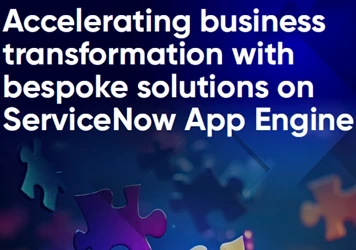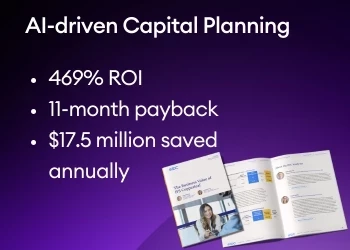Time for high value process excellence: Interview with Xerox Chief Process Officer Gregory North
Add bookmarkProcess is fundamental to the way we work and yet for too long it’s been confined to specialist quality or process improvement departments. Isn’t it time that process played a more prominent role in the boardroom?
That seems to be happening in certain pockets of the industry as Xerox Business Services has appointed Gregory North as its Chief Process Officer. In this PEX Network interview, North describes the new role as well how process excellence needs to move beyond the jargon and speak the language of business to truly drive results.
PEX Network: You've recently been appointed as Chief Process Officer of Xerox Services, Xerox Corporation. What does your new role involve?
Gregory North: The Chief Process Officer at Xerox Business Services is responsible for having what ultimately is an effective approach to process design, management and execution - a relatively comprehensive responsibility. But, at the same time, it involves creating a framework that can be effectively used by the whole organization.
If you think about it, from an end to end perspective, the processes at the highest level of a company starts with: what do we want to offer? Once we have that offer understood, how do we want to sell it? Once we've sold it, how do we make sure the transition into a delivered service is one that's effective, both for the customer and for the business? And then, over time, how do we innovate and improve on that offer?
That high level process model is something, going forward, that will be my and my team's responsibility to make sure is effective. And, working with my peers in the organization who own those different aspects of the business, effectively deployed, such that, in the end, every individual in Xerox Services knows what oar they're supposed to be pulling, and they pull it in a direction that takes care of the customer and the shareholder.
PEX Network: Why did Xerox create this role now?
Gregory North: The assumption is that if you want to take your company to the highest level of performance excellence, you have to work upstream to understand the processes that underlie that performance. Especially as you're beginning to evolve in a more innovative direction where you want to make sure you can agilely take advantage of market opportunities, you have to understand which processes are the ones that are most to move quickly and smartly. Which ones are the ones that need to be, if you will, maintained? And what other processes might be ones that you need to achieve more stability or control over? Understanding those three buckets is critical in order to improve the strategic agility of the business.
PEX Network: It really sounds like it's a lot more strategic than, say, we've often thought of as process excellence in the past. Is that the case?
Gregory North: There is no question that as we migrate from roles such as quality management or process improvement to a role like Chief Process Officer, we're beginning to migrate the portfolio to the same strategic level that we think about with the Chief Information Officer or a Chief Strategy Officer. What we're really saying is that it's as important to understand the critical processes of a business as it is to understand its strategy or its information architecture. Ultimately, between the CSO, the CIO and the CTO, you should have an agreed upon vision and business architecture that you can then effectively burn into and capitalize on across your business.
PEX Network: I think a lot of process professionals out there will probably be looking on in envy, particularly at your new role, because we often talk about getting process into the boardroom. But it seems very difficult to actually achieve. What, in your perspective, does it actually take to get the C-level to pay attention to process?
Gregory North: This question gets asked again and again and it's probably been brought up because there's two kinds of ways to talk about quality or process with your C-suite potential partners. One way to talk about it is process speak. The problem with this is that we tend to talk about it in terms of programs, initiatives, and tools.
It can be total quality management. It can be statistical process control. It can be Lean Six Sigma. It can be Lean. It can be Process Excellence.
But, in the end, all of these are a different way of talking about the same thing: Customer, process, data. Ultimately we need to get away from the "process speak" and speak the language of business: revenue, growth, profit, scale. These terms are the ones that, in the C-suite, your senior executives are using every day with each other.
Further, if you think about the customers who have serious challenges or opportunities or a customer who's looking for significant new value provided by your company, between the Voice of the Customer and the voice of the business, there are plenty of signals that we can capitalize on and leverage process excellence going forward. We can do this without having to use what amounts to the jargon, and the emphasis on tools and methodologies that have been, in some ways, holding us back.
Ultimately, if you want to sit in the C-suite and have these conversations, you need to be helping them work on their processes and solve the challenges that are the most material ones for the business and the stars to steer by for every employee.
PEX Network: We've spoken, you and I, over the past couple of years about, say, shifting approaches to process excellence. Do you think that companies are changing the ways, more in general, on how they view process?
Gregory North: I would say, as I did a moment ago, that this is an evolving skill set; an evolving orientation for companies. It's the classic, try something; if it doesn't work, try something else.
Over time, I think companies have tried a lot of different things. For instance, every individual in the whole company has to be focused on quality and process. That was TQM [Total Quality Management]. They've tried having a set of dedicated professionals who know more about process and qualities and called that Lean Six Sigma. Then they've tried taking and focusing on things like process design management and business architecture. They do that in order to transform the most critical processes in a business.
From my perspective, the false choice between those three is what is holding us back. You have to have a continuous improvement environment on your floor where all your employees are working every day to solve customer challenges, and you do not want them to have to step back and say, wow, I've got a process I need to improve. I'd better call the black belt.
You don't want your black belts working on things that ultimately could be solved on the shop floor. You want them thinking more about end to end processes, which, if you bring them in, they can help sew together and, effectively, cross silos, both inside and outside your company's ecosystem.
Finally you want business leaders who are thinking about their processes and what they have to do to do better as leaders. How to develop and deploy a strategy. How to develop and deploy talent. How to develop and deploy value in their business as they migrate from a lower margin to a higher margin offering, for example.
These are all processes, just like anything else. So if you can get away from which one of those three is right, and focus on the fact that great companies have to be good at all those things, then I think you begin to see the lens of process excellence in the 21st century, which is you've got to fire on all of those segments in order to be effective.
PEX Network: Now, you were appointed Chief Process Officer within the last couple of weeks. Where are you going next from here?
Gregory North: The plan would be to look at the areas of the company where we need to make sure that we have capitalized on process excellence in order to leverage it for a better footing in the marketplace and faster growth. We also need to identify areas where we need to capitalize on best practices and standardization in order to get what we do in the best parts of Xerox spread throughout the company. Then, working in partnership with our IT teams and with our teams that are responsible for how we effectively design and deliver service, we need to begin to evolve our Enterprise Architecture to a point where it's capable and flexible and seen as a Service Oriented Architecture, which can agilely move from where we are today to where our customers need us to be next. And we need to do that well and quickly.
[inlinead]




















